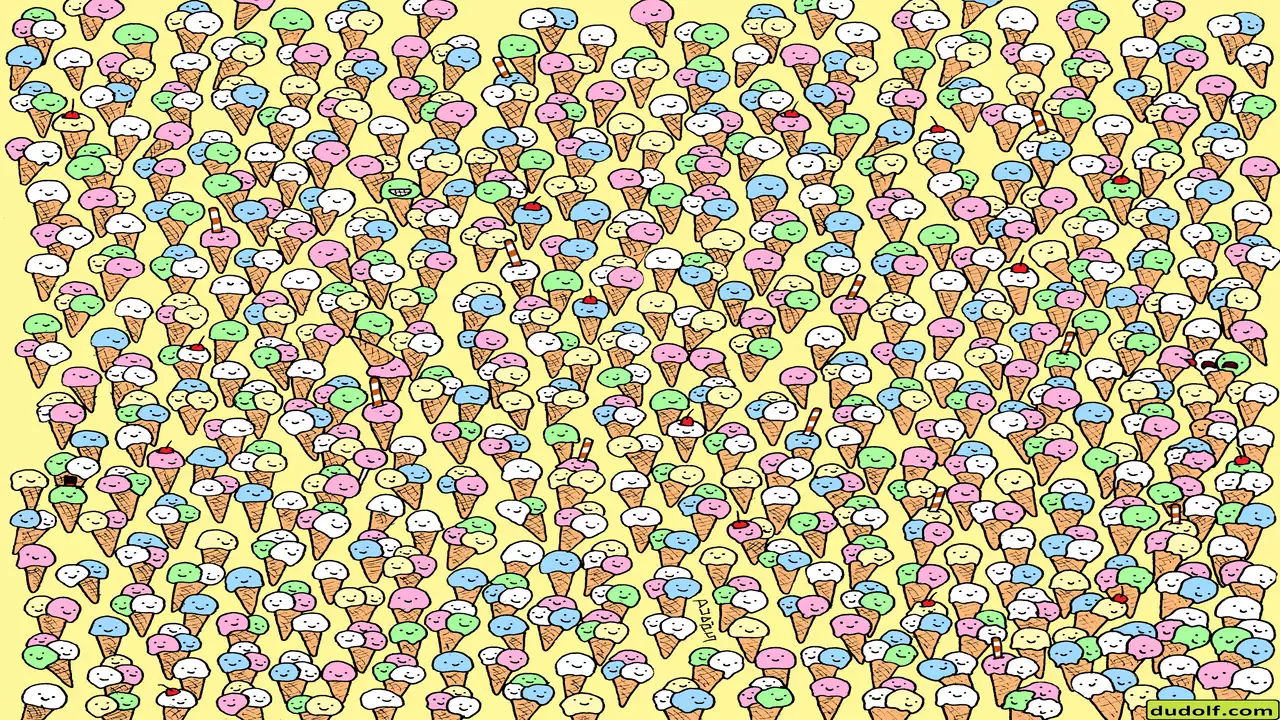Optical illusions have long been captivating humanity with their ability to trick the mind and challenge our perception of reality.
From ambiguous figures to geometric patterns that seem to defy logic, optical illusions come in many forms, each presenting a unique puzzle for the brain to unravel.
Among these, the challenge to spot a hidden object within a complex scene has gained popularity, with enthusiasts worldwide testing their visual acuity and attention to detail.
One such intriguing challenge that has caught the internet by storm is the quest to spot the lollipop hidden among other candies in a mere 8 seconds.
In this article, we delve into the psychology behind optical illusions, explore the mechanisms of visual perception, and embark on the journey to uncover the elusive lollipop.
Understanding Optical Illusions:

Optical illusions occur when our visual system misinterprets the information received by our eyes, leading to perceptual distortions or discrepancies between what we see and what is actually there.
These illusions exploit the inherent limitations and biases of our visual perception system, revealing the intricacies of how our brains process and interpret visual stimuli.
One of the fundamental principles underlying optical illusions is the concept of Gestalt psychology, which emphasizes the tendency of the human brain to organize sensory input into coherent patterns and forms.
According to Gestalt principles such as proximity, similarity, closure, and continuity, we perceive objects as unified wholes rather than isolated parts, often filling in missing information to create meaningful perceptions.
Moreover, illusions like the one presented in the challenge of spotting the lollipop among other candies exploit factors such as color, contrast, and spatial arrangement to conceal the target object within a complex visual array.
These illusions highlight the role of selective attention, as participants must focus their cognitive resources on detecting the relevant stimulus while filtering out distracting information.
The Neuroscience of Visual Perception:
To unravel the mystery behind optical illusions, we must delve into the neuroscience of visual perception, exploring how the brain processes and interprets visual information.
The visual system comprises a complex network of neural pathways that span from the retina to various cortical regions responsible for different aspects of visual processing.
At the initial stage of visual processing, light entering the eye stimulates photoreceptor cells in the retina, initiating a cascade of neural signals that are transmitted to the visual cortex via the optic nerve.
Here, specialized neurons in different cortical areas analyze different features of the visual scene, such as shape, color, motion, and depth, before integrating this information to form a coherent perceptual experience.
However, despite the brain’s remarkable ability to make sense of visual input, it is susceptible to various perceptual biases and illusions due to inherent constraints in neural processing.
For instance, the brain may prioritize certain features or patterns over others, leading to phenomena such as inattentional blindness or change blindness, where individuals fail to notice significant changes in their visual environment.
Spotting the Lollipop: A Cognitive Challenge:
Armed with an understanding of the principles of optical illusions and the neuroscience of visual perception, we now turn our attention to the challenge at hand: spotting the lollipop hidden among other candies in just 8 seconds.
As participants gaze upon the colorful array of candies, their brains must rapidly scan the scene, searching for distinctive features that distinguish the target object from its surroundings.
The task demands not only keen visual acuity but also efficient cognitive processing, as participants must allocate their attention strategically to detect the lollipop amidst the sea of distractions.
Factors such as color, shape, size, and orientation serve as cues that guide the search process, enabling individuals to hone in on the elusive target within the allotted time frame.
However, the challenge is not without its pitfalls, as the brain’s tendency to fill in missing information or overlook subtle details can impede the search for the hidden lollipop.
Moreover, the presence of similar-looking distractors adds another layer of complexity, requiring participants to discern nuanced differences and resist the allure of false positives.
The Psychology of Attention and Perception:
Central to the success of the lollipop challenge is the interplay between attention and perception, two intertwined cognitive processes that shape our experience of the world.
Attention acts as a spotlight, directing our cognitive resources towards relevant stimuli while filtering out irrelevant information, thereby influencing what we perceive and remember.
In the context of the lollipop challenge, selective attention plays a crucial role in guiding the visual search process, allowing participants to prioritize the detection of the target object amid competing stimuli.
Through focused attention, individuals can overcome the perceptual biases and distractions that hinder their ability to spot the hidden lollipop, enhancing their chances of success within the constrained time limit.
Furthermore, the challenge highlights the phenomenon of top-down processing, wherein prior knowledge, expectations, and goals influence perception by guiding the interpretation of sensory input.
Participants may draw upon their conceptual knowledge of lollipops and candies to form mental templates or search strategies that facilitate the identification of the target object, demonstrating the intricate interplay between bottom-up sensory input and top-down cognitive processes.
Conclusion:
In the quest to spot the lollipop hidden among other candies in 8 seconds, we embark on a journey through the fascinating realm of optical illusions, visual perception, and cognitive psychology.
Through a combination of Gestalt principles, neural mechanisms, and cognitive processes, we unravel the mysteries of how the brain interprets visual stimuli and navigates the complexities of the visual world.
As we grapple with the challenge of detecting the elusive lollipop, we gain insights into the intricate interplay between attention, perception, and cognition, highlighting the remarkable capabilities and limitations of the human mind.
Whether we succeed or fall short in our quest, the journey itself offers valuable lessons about the nature of perception, the power of attention, and the allure of optical illusions that continue to captivate and intrigue us.
